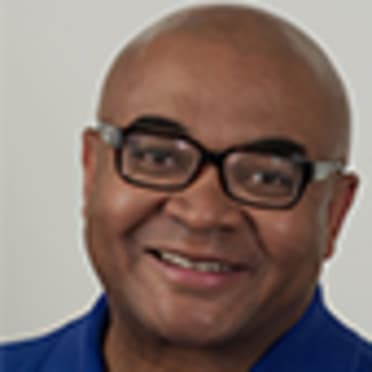No one loves a good debate quite like baseball fans, and with that in mind, we asked each of our beat reporters to rank the top five players by position in the history of their franchise, based on their career while playing for that club.
Here are the top left-handed starting pitchers in Rockies history.
1. Jorge De La Rosa, (2008-16)
Key fact: De La Rosa leads all Rockies pitchers in wins (86) and strikeouts (985).
This was a close call, but longevity -- 200 starts in a career interrupted by Tommy John surgery -- and some good years on some struggling teams put De La Rosa in the top spot. Before joining the Rockies in a trade with the Royals just before the 2008 season, De La Rosa had two Minor League stints with the D-backs, was in the Minors with the Red Sox, spent a season in Mexico and saw Major League time with the Brewers and Royals.
De La Rosa is one of two pitchers to reach double figures in wins in four different seasons (righty Jon Gray is the other). De La Rosa¡¯s 53-20 record at Coors gives him the club mark for home wins and winning percentage (.726).
2. Jeff Francis, (2004-10, 2012-13)
Key fact: Francis was the key to the 2007 run to the World Series with his 17-9 record, 4.22 ERA and 215 1/3 innings pitched.
Francis, the team¡¯s top pick in the 2002 Draft, used his ability to spot pitches and his plus changeup to help transform the pitching staff. In his first four seasons, he went 47-34, with the fourth of those years being the magical 2007. He actually was slightly better in 2006, when he went 13-11 with a 4.16 and a 118 ERA+ (four points higher than 2007).
Shoulder soreness that affected his 2008 led to a surgery that cost him the 2009 season and reduced his effectiveness for the rest of his first stint with the club. After spending 2011 with the Royals, Francis signed a Minor League deal with the Reds for 2012. However, he never appeared with them in the Majors, opted out of that deal and rejoined the Rockies for another two seasons. But in 2015, as his career was winding down, he was part of Canada¡¯s gold medal-winning Pan American Games team.
3. Kyle Freeland, (2017-present)
Key fact: Freeland¡¯s 2.85 ERA in 2018 was lowest in club history over a full season, and fourth-lowest in the National League that season.
Freeland has the tools and intangibles to find his way to the top of the list. Not overpowering, he succeeds when he spots pitches well and changes speeds. His pitch mix is improving. And he is motivated after a messy 2019 (3-11, 6.73 ERA).
One of his biggest attributes is a burning desire to succeed with the team he has followed his entire life. Before pitching at the University of Evansville, he grew up in Denver and pitched at Thomas Jefferson High School.
4. Tyler Anderson, (2016-19)
Key fact: Anderson debuted in 2016 and compiled a 3.54 ERA and a 137 ERA+.
Anderson dealt with injury through the Minors and some in the Majors, and his last season with the club ended early because of a severe left knee surgery. But he had a couple of solid spurts on two postseason teams -- 3-1, 1.19 in four appearances (three starts) to end 2017, and 6-3, 3.72 in 20 starts in the first half of 2018.
5. Mike Hampton, (2001-02)
Key fact: In 2001, Hampton became the first pitcher to represent the Rockies in the All-Star Game.
Hampton¡¯s time here was short and ultimately unsuccessful -- 21-28, 5.75 ERA after signing a heralded eight-year, $121 million contract during the 2000 Winter Meetings. With little competition among lefties, the All-Star Game invite -- based on a 9-2 record and 2.98 ERA through his first 13 starts -- earned him this nod. Hampton¡¯s collapse in the unique atmosphere at Coors Field led the club to begin storing baseballs in a temperature and atmospheric pressure-controlled chamber known as ¡°the humidor¡± starting in ¡¯02.

